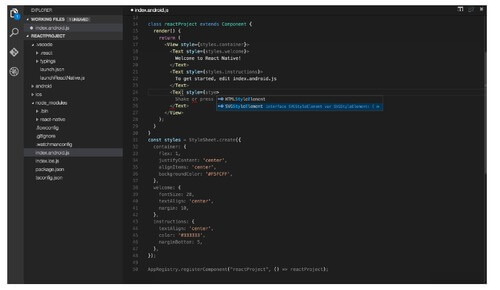Problem: the selected item in the list view is not showing in my text. Recordset 'Mattress Update connection Public slcmat As String 'update mattress catcher Form CODE. That could, i couldn't find anything reliable solution to my problem. PSC source code: CommonDialog Enhanced Callback (Contest. Visual Basic 6 ActiveX ListView Source 3.0.0.0 Quickly and easily create professional applications with vb 6.0. Visual Basic 6 ActiveX ListView is a powerful, versatile, easy-to-use and customizes to give you the ability to quickly create professional applications.
Mr.No 14-Oct-05 22:45 14-Oct-05 22:45 mav.northwind Thanks for this great control. I badly needed this functionality in a VB.NET application so I printed the code and translated into VB.NET. By the way I noticed something weird in my application not sure if it happens in the C# version. When I populate the listviewitem line with subitem objects rather than directly assigning the SubItem(n).Text property the updates are not refreshed on screen even if the underlying data in the listview is updated. Thanks again for this marvelous life saver. Mr.No wrote:By the way I noticed something weird in my application not sure if it happens in the C# version. When I populate the listviewitem line with subitem objects rather than directly assigning the SubItem(n).Text property the updates are not refreshed on screen even if the underlying data in the listview is updated.
I am getting this problem. Is there a workaround? It is necessary for me to create subitems and then update them. However, as stated above, the items do not refresh to reflect the change. RedDragon50 13-Mar-05 10:33 13-Mar-05 10:33 Having trouble using this control in VB.NET 2003.
I have created a combobox on the control. Same thing happened with a textbox used. When I go to edit a subitem the control pops up and I can edit the subitem. When done editing the subitem text reverts back to the origonal text no mater what.
When the same subitem is clicked again the combobox is filled with the modified text that was previously entered but the subitem does not reflect this change. Basically the ListViewEX seems to remember the value but does not display it properly. The first item(column) does not display this problem and updates properly, only subsequent subitem columns. Any Idea what might be happening?

Introduction Hello again! Today, I will show you how to make your own text editor in Visual Basic. We have a lot of work to do, so let's get started.
Our Project As you probably know, a text editor is a computer program with which you can enter text. You can ultimately save or open the file into or from the program itself. Basically, what you can expect is the functionality behind opening and saving files, as well as loading a most recently used list of files. These file names appear in your file menu, an aid for quicker access. Start Visual Studio and create a new Windows Forms project. Once done, design your form to resemble Figure 1: Figure 1: Our design Code Let me start with the Form's code, and then move to the other objects as we encounter them. Add the following variables to your form: Private Const APP_NAME As String = 'Editor' Private m_DataDirty As Boolean Private m_FileName As String Private WithEvents m_MruList As MruList App_Name is my application's name, DataDirty determines if the opened file's content has changed. Caterpillar et factory passwords change keygen generator crack free.
Based on this, we will know that we need to save. FileName will be the name of the file that gets used. MruList is a separate class for the Most Recently Used items; I will explain this later.
Add the following code for the New menu item: 'start a new document Private Sub mnuFileNew_Click(ByVal sender As System.Object, _ ByVal e As System.EventArgs) Handles mnuFileNew.Click 'Make sure the current data is safe. If Not DataSafe() Then Exit Sub Me.rchFile.Text = ' m_FileName = Nothing Me.Text = APP_NAME & ' []' m_DataDirty = False 'no point in saving a blank file Me.mnuFileSave.Enabled = False Me.mnuFileSaveAs.Enabled = False End Sub Here, I reference a function named DataSafe (which we will create now) and set up the Richtextbox and the rest of the screen.
War in the pacific admiral's edition free download. Add the DataSafe function now: 'Return true if it is safe to discard the current data. Private Function DataSafe() As Boolean If Not m_DataDirty Then Return True Select Case MessageBox.Show('The data has been modified. _ Do you want to save the changes?'
, _ 'Save Changes?' , MessageBoxButtons.YesNoCancel) Case Windows.Forms.DialogResult.Cancel 'the user is canceling the operation. 'don't discard the changes. Return False Case Windows.Forms.DialogResult.No 'the user wants to discard the changes Return True Case Windows.Forms.DialogResult.Yes 'try to save the data SaveData(m_FileName) 'see if the data was saved Return (Not m_DataDirty) End Select End Function Here I just made sure the content of the Rich Textbox has indeed changed, and depending on the displayed messagebox's result, I either cancel, or save the information into a file. Notice how I keep setting the value of the DataDirty variable Now, add the Form_load event: 'Set the Dialog's initial directory. Private Sub Form1_Load(ByVal sender As System.Object, _ ByVal e As System.EventArgs) Handles MyBase.Load Dim init_dir As String = Application.StartupPath If init_dir.EndsWith(' bin') Then init_dir = _ init_dir.Substring(0, init_dir.Length - 4) dlgOpenFile.InitialDirectory = init_dir dlgSaveFile.InitialDirectory = init_dir m_MruList = New MruList(APP_NAME, MenuStrip1, 4) End Sub Inside Form_Load, you determine your application's startup path. I made reference to the MruList class here as well, because it needs to load the recent items when loaded.